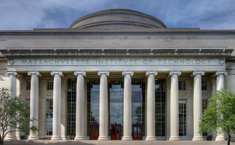
Project: Citronelle
Company/Alliance: SECARB, Denbury, Southern Energy
Location: Citronelle Oil Field, Bucks, Mobile County, Alabama
Start Date: August 2012
End Date: September 2014. Storage Site continued to be used by Plant Barry
Size: As of June 2015, Approx. 115,000 tons sequestered, and approx. 240,000 tons captured
CO2 Source: CO2 was be supplied from CO2 capture at the Plant Barry, Alabama. A 10 mile pipeline connecting the sites is to be constructed by Denbury Resources. Capture was successfully started in June 2011.
Storage: Saline reservoir. The proposed sequestration site is on the southern flank of the Citronelle Dome. It is a proven 4 way closure and there is no evidence of significant faulting or fracturing. There are multiple confining units between potential injection targets and base of USDW. Target formation is the Paluxy Formation at 9,400 feet deep and 1,100 feet thick.
Motivation/Economics:
Total project cost: $111.413 million. DOE share $77 million (69%). Non-DOE share $34.432 (31%)
Comments:
On October 29, 2013, the SECARB announced that they had reached a carbon dioxide injection goal of 100,000 metric tons. Originally this was a 3 year project but SECARB is currently still continuting sequestering CO2 from Plant Barry as of the end of 2015.
This is the second part of the SECARB Phase 3 project, or “Anthropogenic Test”. It began in June 2011 and is a fully integrated CO2 capture, transportation, and geologic storage project. Under separate funding, the CO2 will be captured at Alabama Power Company’s Plant Barry, a coal-fired power generating facility located in Bucks, Alabama, and transported by pipeline and sequestered within a saline formation at the nearby Citronelle Oil Field operated by Denbury Resources. During the Anthropogenic Test, Denbury will inject approximately 100,000 tons of CO2 per year for three years. The SECARB team will deploy an extensive monitoring, verification, and accounting program that will commence pre, during, and post-injection. The Anthropogenic Test is the first RCSP Phase III large-scale project to utilize anthropogenic, or man-made, CO2 for geologic storage.
The project’s first characterization/observation well was drilled in December 2010-January 2011. Data from this well will be used to refine the geologic model. The Underground Injection Control permit application was submitted to the Alabama Department of Environmental Management for the two injection wells in December 2010. Permits were issued in November 201.
In 2011, Denbury completed construction of a 12-mile pipeline to transport the CO2 from Plant Barry to the injection well in the Citronelle oil field. The injection well drilling began in December 2011, and the observation/backup injection well was drilled in January 2012.
The CO2 storage site is located within the Citronelle Dome geologic structure. The Citronelle Dome, which provides secure four-way closure free of faults or fracture zones. The target Paluxy Formation, a major reservoir containing saline water (i.e. water that is too deep and salty to serve as a drinking water supply). The Paluxy occurs at a depth of 3,000 to 3,400 meters. The Paluxy is overlain by multiple geologic confining units that serve as vertical flow barriers and will prevent CO2 from escaping from the storage reservoir. Denbury owns the mineral rights and will secure the pore space at the Citronelle Saline injection site. SECARB will monitor the CO2 injection. Click here for more information on Plant Barry.
Project Link: SECARB Website
Technical Papers:
Koperna, G J, S M Carpenter, R P, R Trautz, D Rhudy, R Esposito, Project Assessment and Evaluation of the Area of Review (AoR) at the Citronelle SECARB Phase III Site, Alabama USA, Energy Procedia, Vol 63, pp 5971–5985, (2014) <Link to PDF>
Conaway, C.H., Thordsen, J.J., Manning, M.A., Cook, P.J., Trautz, R.C., Thomas, B., Kharaka, Y.K. (2016) Comparison of geochemical data obtained using four brine sampling methods at the SECARB Phase III Anthropogenic Test CO2 injection site, Citronelle Oil Field, Alabama, International Journal of Coal Geology 162:85-95, <Link to Online Article>
Other Sources and Press Releases:
Southern's Plant Barry is successfully capturing CO2 (June 2011)
SECARB Citronelle fact sheet [PDF]
SECARB early project
fact sheet [PDF]
Regional Carbon Sequestration Partnerships Annual Review Meeting [Gerald Hill's presentation SECARB; PDF]
(October 2010)
DOE to fund $979m for three advanced CCS projects (December 2009)